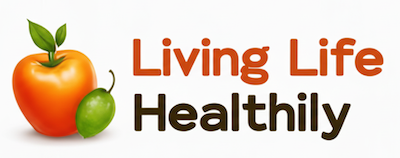
Try these 10 journaling prompts to ease your anxiety. Describe your anxious thoughts by writing them down. Identify your anxiety triggers and reflect on your physical sensations with sensation mapping. Write a heartfelt letter to your anxiety, externalizing your emotions. List daily affirmations like “I am resilient” to cultivate positivity. Brainstorm favorite self-care activities, and release worries on paper to diminish their power. Express gratitude regularly, focusing on the positives. Reflect on past successes to soothe stress and plan future coping strategies. Exploring these prompts will guide you toward greater peace and understanding of your anxiety.
Describe Anxious Thoughts
When you find yourself in the grip of anxiety, words can be your allies. Grabbing a pen and paper allows you to release the chaos within, uncovering your anxiety patterns with thought clarity. Start by listing your anxious thoughts, examining the underlying beliefs that keep you entangled. Writing them out helps you explore these patterns, showcasing themes that might’ve lurked in your subconscious. Recognizing patterns in mental responses to anxiety can also help you assess the impact it has on your daily functioning. As you examine your list, cross out those thoughts lacking solid proof, challenging their grip on your mental state. This act of defiance against negativity sets you free, liberating your mind from assumptions that no longer serve you. Mindfulness practices, like focusing on the present moment, can further enhance your self-awareness and assist in managing anxiety. Reflecting on your thought journey, identify if any intentions might be protective or helpful, revealing unexpected wisdom within your anxiety. This approach transforms anxiety from an overwhelming monster to a misunderstood creature holding keys to your liberation.
Identify Anxiety Triggers
Understanding what provokes your anxiety is essential to managing it effectively. By pinpointing your triggers, you can take control and find freedom from the chains of anxiety. Common triggers include excessive caffeine consumption, negative self-talk, and receiving unexpected health diagnoses. Financial stress reminds you of uncertainty, while a high-pressure work environment or a cluttered space can make the simplest tasks seem intimidating. Embrace your journey by identifying these triggers, and you’ll find ways to dismantle them. Recognizing symptoms of chronic stress is crucial as they can exacerbate anxiety and affect overall health.
Environmental triggers such as social anxiety in gatherings, life changes, or public speaking can also ignite anxiety. Examine your stressors related to substance use or eating habits, which might be linked to an unhealthy diet. Personal traumas or the lack of a supportive system can exacerbate feelings of being overwhelmed. Perfectionism pressure can stifle your potential, imprisoning you in unrealistic expectations. Learn to recognize these patterns to reclaim your power. Symptoms of anxiety include tension, worry, racing thoughts, and irritability, which can become severe if triggers are unmanaged.
Explore the table below for some common anxiety triggers:
| Type | Trigger | Example |
|---|---|---|
| Environmental | Work environment | Toxic workplaces |
| Lifestyle | Substance use | Alcohol, cannabis |
| Emotional | Negative self-talk | Persistent self-doubt |
| Social | Public speaking | Performances, events |
| Personal | Health diagnoses | Chronic illness news |
Find liberation by turning awareness into action, letting go of what no longer serves you.
Reflect on Physical Sensations

Reflect on Physical Sensations
Pinpointing your anxiety triggers is just the beginning of understanding your body’s response to stress. Delving deeper into your physical sensations offers clarity and freedom. Engage in body awareness by sensation mapping, a transformative process where you identify where anxiety manifests physically. Noticing tight shoulders or a clenched jaw could reveal early signs of discomfort and aid in managing stress.
Consider diving into the details:
- Explore the intensity of the sensations; is it a mild flutter or a crushing weight?
- Observe any textures, smells, or sounds that accompany these feelings. Is it an internal static noise or a gripping, cold texture?
- Document how these sensations change over time, revealing patterns and offering insights.
- Recognizing anxiety triggers can help in managing responses and developing proactive management strategies.
- Associate specific emotional states with physical manifestations. Are anxiety and excitement confusingly similar for you?
- Identify if recurring physical sensations signal particular anxiety triggers.
- Engaging in physical activity can also aid in identifying and releasing built-up tension as you become more aware of your body’s responses.
Write a Letter to Anxiety
As you begin to navigate the complex landscape of anxiety, writing a letter to it can be a powerful exercise for gaining insight. Anxiety affects 18% of adults and an even higher percentage of children in the U.S., so recognizing its widespread impact can be reassuring. This therapeutic exercise allows you to externalize anxious feelings, creating a safe space for honest self-reflection. By personifying anxiety, you strip it of its power, transforming it from an indefinable cloud into something tangible. Engaging in mindfulness practices enhances emotional awareness, which can support this reflective process.
This letter becomes your ally in anxiety management, fostering deeper understanding and relief. In your letter, identify the sources and elaborate on the emotions and physical sensations that arise. Describe how anxiety has impacted your daily life and well-being. This reflection not only sheds light on underlying patterns but also helps you pinpoint your anxiety triggers. By acknowledging these aspects, you’ll begin to dismantle their hold over you.
Next, craft a plan to cope with or overcome what you’ve unearthed. Consider effective coping strategies drawn from past successes—times when you stood resilient against anxiety’s grip.
Use this as an opportunity to challenge negative thoughts and empower yourself with a renewed sense of control. Embrace liberation through this act of writing, forging a clearer path towards freedom from anxiety’s lingering shadow.
List Daily Affirmations

While managing anxiety’s challenges, listing daily affirmations can offer a powerful tool for maintaining inner peace and resilience. By crafting effective affirmations, you give yourself the freedom to cultivate a mindset that actively combats stress and anxiety. Begin by targeting specific anxiety triggers with clear, positive phrases in the present tense. This immediacy makes affirmations feel actionable. Repeating them regularly amplifies the affirmation benefits, anchoring a sense of calmness and strength. Exercise releases chemicals that ease anxiety symptoms, which can complement your affirmations in promoting mental well-being. Consider these affirmation examples to incorporate into your journaling routine:
- “I am capable of managing my anxiety and staying calm.”
- “I trust myself to handle any situation.”
- “I am strong and resilient in the face of challenges.”
- “I am kind and compassionate towards myself.”
- “I am grounded in the present moment and let go of worry about the future.”
Writing them down not only reinforces their impact but also invites an opportunity for reflection. Visualize success as you repeat your affirmations, and connect emotionally to their words. Tailor affirmations to your evolving needs and pair them with mindfulness techniques for heightened effects. Consistency will eventually solidify their benefits, empowering you to embrace life’s uncertainties with confidence.
Explore Fulfilled Moments
Fulfillment is an essential antidote to anxiety, offering pockets of peace and joy in the chaos of daily life. By exploring positive experiences, you reveal the secret to lasting calm.
Begin with emotional reflection: investigate those times when you felt a natural, undeniable sense of completeness. Identify moments, big or small, that filled your heart with gratitude. What was it about those instances that made them special? Break down the essence of those experiences to understand their impact on your mental health.
Focus on the sense of happiness they brought. Reflect on what made the moments uniquely satisfying. Was it the people, the place, or simply the act of being present? Documenting these elements helps you see what truly fulfills you and how to seek more of it.
Embrace those times as reminders of your potential for joy. Think about how revisiting these experiences or creating similar ones can be a strategy to reduce anxiety in the future.
Craft a plan that involves seeking these meaningful encounters, aligning them with your intrinsic strengths, and using them to create a fulfilling life that gives you stress-free liberation.
Document Morning Thoughts

To kickstart your day on a positive note, consider making morning journaling a part of your routine, as it offers multiple benefits for easing anxiety. As you pour your thoughts onto paper, you’ll find it liberating to document your morning thoughts and unravel those persistent thought patterns.
This practice not only reduces stress by externalizing feelings but also deepens your self-awareness. You’ll find moments of calm as you identify anxiety’s triggers and patterns.
Embrace these strategies as part of your morning routine:
- List Top Anxious Thoughts: Capture the thoughts weighing on your mind, helping acknowledged issues to surface.
- Rate Your Anxiety: Use a simple scale to put your anxiety into perspective, making the intangible tangible.
- Recognize Physical Sensations: Note any bodily responses to stress, connecting them to your mental state.
- Identify Day’s Triggers: Reflect on potential stressors, empowering you to approach them with foresight.
- Outline Daily Goals: Focus on achievable actions, shifting attention from negative spirals to productive intentions.
This morning routine allows you to step bravely into the world, transforming your thought patterns for a day filled with purpose and serenity.
You’re paving respect for your mind’s journey, acknowledging where anxiety lies, yet magnifying where empowerment thrives.
Brainstorm Self-Care Activities
Exploring various self-care activities can greatly ease anxiety and promote mental tranquility. Imagine you’re in a space that feels overwhelming, and instead of feeling trapped, you discover freedom in self-care practices. Mindful breathing is a powerful tool to calm the storm within. You might try deep breathing exercises to release tension or perhaps find peace in the rhythm of your breath through meditation.
Creative expression offers an outlet for emotions. Whether it’s painting, crafting, or playing a musical instrument, let your creativity flow without judgment. It’s an escape, a way to embrace what makes you feel alive and fulfilled.
Consider these activities:
| Nature Activities | Creative Outlets |
|---|---|
| Gardening for relaxation | Painting as stress relief |
| Walking in nature | Crafting for mental calm |
| Outdoor yoga for balance | Photography for perspective |
| Physical Relief | Routine and Planning |
| Deep breathing exercises | Creating a daily schedule |
| Yoga for anxiety | Planning a self-care weekend |
Release Worries on Paper

Catharsis often comes through the simple act of writing down your worries. By externalizing your concerns, you create space to observe them from a distance, reducing their power over you.
Begin by practicing mindful breathing to center yourself, then let your thoughts flow freely onto the page. Identify the origins of these anxious thoughts and articulate them clearly. Visualization techniques can help transform these worries into something less intimidating. Picture them as leaves floating down a stream, gradually moving out of sight.
Here are some prompts to help release these burdens:
- List the fears and worries causing your anxiety. See them as separate from your true self.
- Write a letter to someone who causes you stress. This exercise lets you express feelings without confrontation.
- Record the specific situations that trigger anxiety and analyze your immediate reactions.
- Describe how anxiety physically manifests in your body. Awareness is the first step to change.
- Use directed daydreaming to safely explore and untangle complex emotions.
Express Gratitude Regularly
After releasing your worries on paper, it’s time to shift your focus towards nourishing your mind with positivity. Start by embracing the transformative power of gratitude, which offers numerous benefits. Regular gratitude practice can reduce stress and negative emotions, turning your attention away from worries and onto life’s positives.
Explore gratitude journaling techniques by noting down five things you’re grateful for each day. This simple act helps reframe your mindset and can effectively counteract anxiety and depression. Expand your perspective by reflecting on why these aspects enrich your life. Use specific details to vividly capture their influence, thereby reinforcing their value.
As you consistently journal, you’ll notice improvements in sleep quality and overall well-being, as gratitude fosters a sense of calm and contentment. Anchor this practice into your daily routine, perhaps as a calming bedtime ritual. Such structured commitment not only lowers blood pressure and boosts immunity but also fosters resilience against life’s challenges.
Consider gratitude not just for tangible items but for the invaluable, like support and personal growth. This liberating mindset shift leads to heightened life satisfaction and enduring happiness. Embrace this journey, and transform your mental landscape.
Soothe Stress Through Reflection

Throughout the article, we’ve explored how journaling can be a powerful tool in managing anxiety and stress. By identifying and analyzing anxious thoughts, you gain insight into the beliefs and triggers that drive these feelings. Through consistent journaling, you can explore your fears, identify factors beyond your control, and focus on your strengths. This practice not only provides a release for pent-up emotions but also fosters self-awareness and emotional regulation.
Integrating journaling into your daily routine offers a pathway to mindfulness, encouraging a deeper understanding of your thoughts and emotions. It becomes a ritual of self-care that can reveal patterns of anxiety, making them more manageable. As you chart your journey through words, you regain control, turning the chaos of overthinking into clarity.
Over time, revisiting your journal entries allows you to recognize growth and resilience, reaffirming your ability to overcome challenges. Ultimately, journaling is more than just an exercise in writing; it’s a therapeutic practice that cultivates emotional wellbeing.














